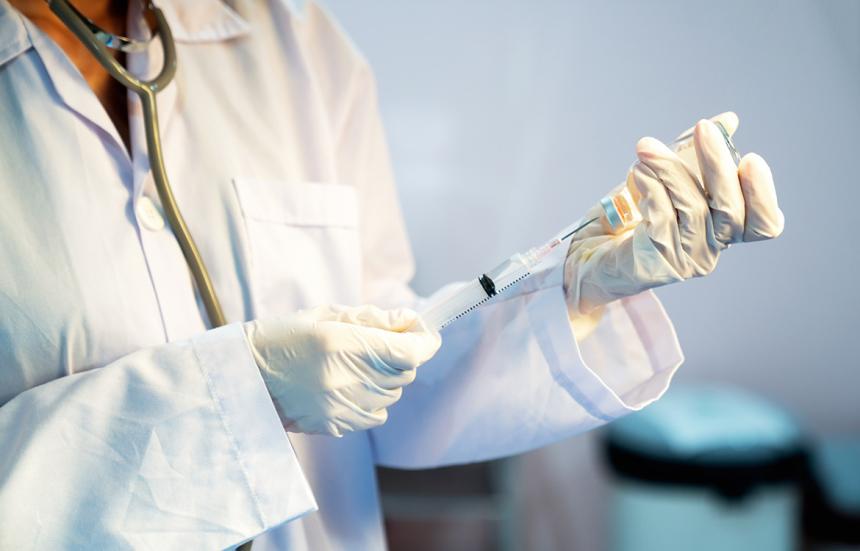Vaccines: How They're Developed, How They Work and When We Can Expect a COVID Vaccine

Since the coronavirus pandemic began in early 2020, we've heard a lot about vaccines. There have been promises for quick vaccine development as well as warnings about how long it really takes to develop a safe, effective vaccine.
You’ve also probably heard that a coronavirus vaccine is necessary for us to return to normal. The good news? Surprising progress has been made in creating vaccines for COVID-19. As of now, there are more than 160 vaccines in various stages of development, and many are already into the human testing phase. While the path to success is still uncertain, never in human history have so many scientists and resources been devoted to a single public health crisis.
In July, multiple vaccine manufacturers released preliminary data from phase 1 studies that showed new vaccines are well tolerated and created antibodies. This is good news because it shows success in human subjects; in phase 1 trials, small groups of people receive the vaccine. The vaccine is currently in a later phase of development, where it is being tested on thousands of people.
While it’s good news, there’s a long way to go. Here’s a quick primer on how vaccines work, how they’re developed and where we stand developing a vaccine for the current coronavirus outbreak.
How Vaccines Work
Vaccines work by mimicking a virus or bacteria that enters the immune system to build up antibodies. Ironically, vaccines are one of our oldest modern medical treatments. The first effective vaccination — to smallpox — was developed in the late 18th century. Over the last 220 years, scientists have advanced the process and effectiveness for vaccines.
Modern vaccines are simple in concept: Create a synthetic compound that behaves like a real live pathogen that doesn’t cause illness. The compound will instead provoke the immune system to create antibodies that teach the body to react quickly and forcefully if the real pathogen invades the body.
Antibodies are an essential part of your immune system. When a pathogen, like bacteria or a virus, invades your body, antibodies bind to the invader and neutralize it, minimizing its damage. Your body came with some antibodies, which were passed from your mother. But most antibodies are developed over time when you’re exposed to pathogens. Vaccines make that natural process happen without infecting you with a real virus or bacteria.
How Vaccines Are Made
There are four basic types of vaccines, but regardless of the type, the process to produce safe and effective vaccines is typically long and difficult. When we’re not in crisis mode, vaccine labs can take anywhere from 10 to 15 years to develop a new vaccine. Of course, when we’re in the throes of a pandemic, labs generally move quicker. For example, during the mumps outbreak, a vaccine was generated in four years – the quickest in U.S. history.
Labs are currently working on an even faster timetable, with hopes that a COVID-19 vaccine might be available by the end of 2020 or by the middle of next year.
The reason it takes so long it that there are five phases of vaccine development:
- Exploration: In this stage, drug companies investigate different approaches to the vaccine. Historically, this phase lasts between two and four years; however, evolving technology has help quicken the pace of this phase for some vaccines, including COVID-19. Another factor that has helped speed up the exploratory stage of the COVID-19 vaccine is information sharing among scientists; for example, scientists genetically mapped the virus as early as January — something that would have taken much longer 10 or 20 years ago. Also, since COVID-19 is similar to SARS — another coronavirus that caused a six-month pandemic in 2003 — scientists working on the COVID-19 vaccine were able to learn those working on the SARS vaccine — a significant head start.
- Preclinical: Once researchers develop a vaccine candidate, it’s tested in cell cultures and animals to see if it triggers an immune response without damaging cells. This takes about a year. And if the vaccine doesn’t work, researchers circle back to the exploration phase. But it is successful, it moves on the testing phase.
- Testing: Vaccines are tested through clinical trials – research studies that evaluate the effectiveness and safety of vaccines, medications, medical devices, surgical procedures or behavioral interventions on a group of people. Most trials start with a small group people (phase 1), and they go well, are expanded to include a moderate size group of people (phase 2) and then a large group (phase 3). Of course, if issues arise during clinical trials, the vaccine reverts to the preclinical phase.
- Regulatory review: If clinical trials go well, the drug company submits a Biologics License Application and product label for the vaccine. In the United States, applications and labels are sent to the U.S. Food and Drug Administration (FDA). In the U.S., this process takes about 10 months, although in a circumstance such as the COVID-19 pandemic, the process will probably be accelerated.
- Production: Once the drug manufacturers have been given a green light, they can begin producing the vaccine. In the U.S., the FDA continues overseeing the production of the vaccine.
Where COVID-19 Vaccines Stand
At the end of July there were 23 vaccines in clinical testing and another 137 in pre-clinical development, according to the World Health Organization.
Dr. Erica Saphire, an infectious disease authority and professor at La Jolla Institute for Immunology, recently told MDVIP affiliates that the earliest a vaccine may be available is January 2021, but it's more likely that a viable vaccine won’t be available until July 2021 or later. Even when one is available, it will take time to get the vaccine manufactured and distributed. Of course, once a vaccine is available, healthcare workers, first responders and those at the highest risk – nursing home patients, for example — will probably be the first to have access to the vaccine.
Until a vaccine is available, continue to take precautions such as wearing a face mask and social distancing to lower your risk of contracting COVID-19. And continue working closely with your MDVIP-affiliated physician to help you control chronic conditions and maintain a strong immune system that can lower your chances of developing serious complications should you catch COVID-19.


